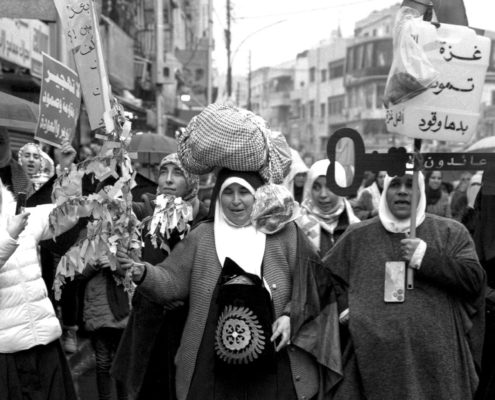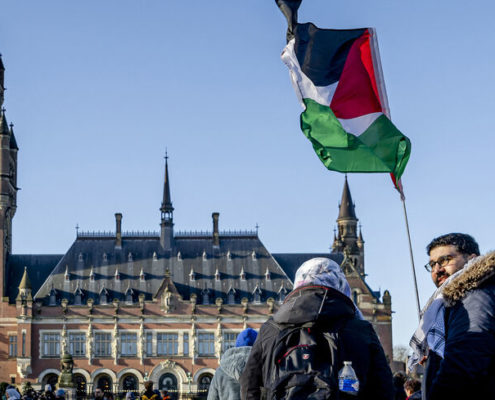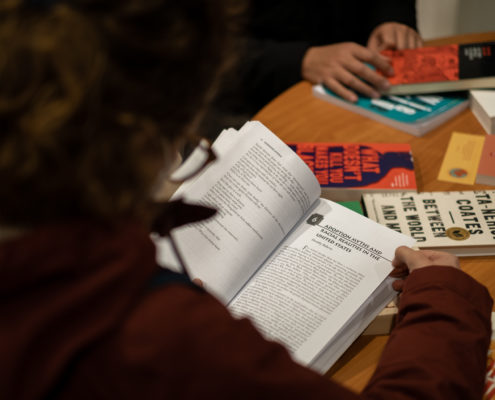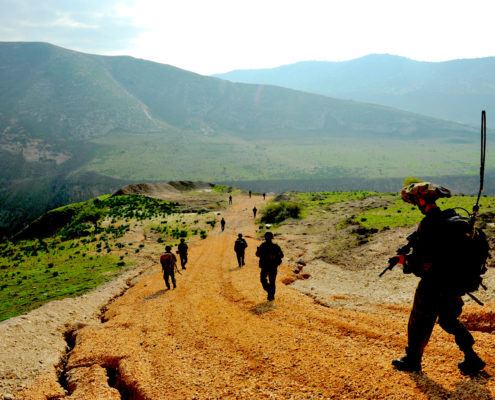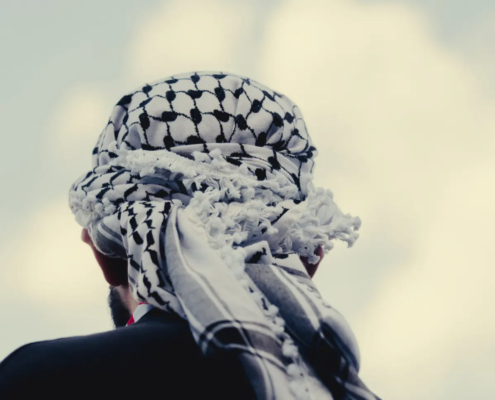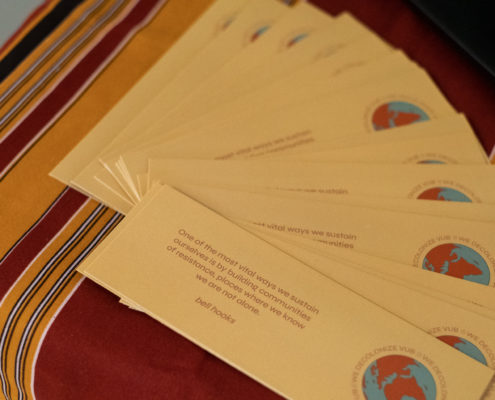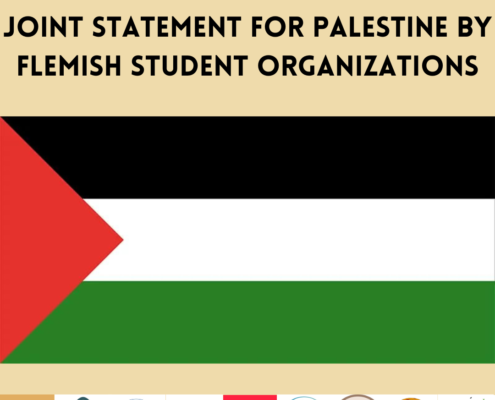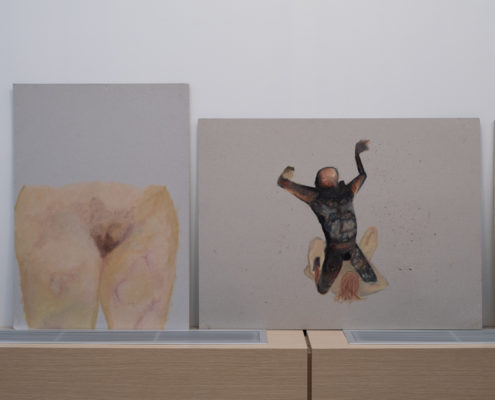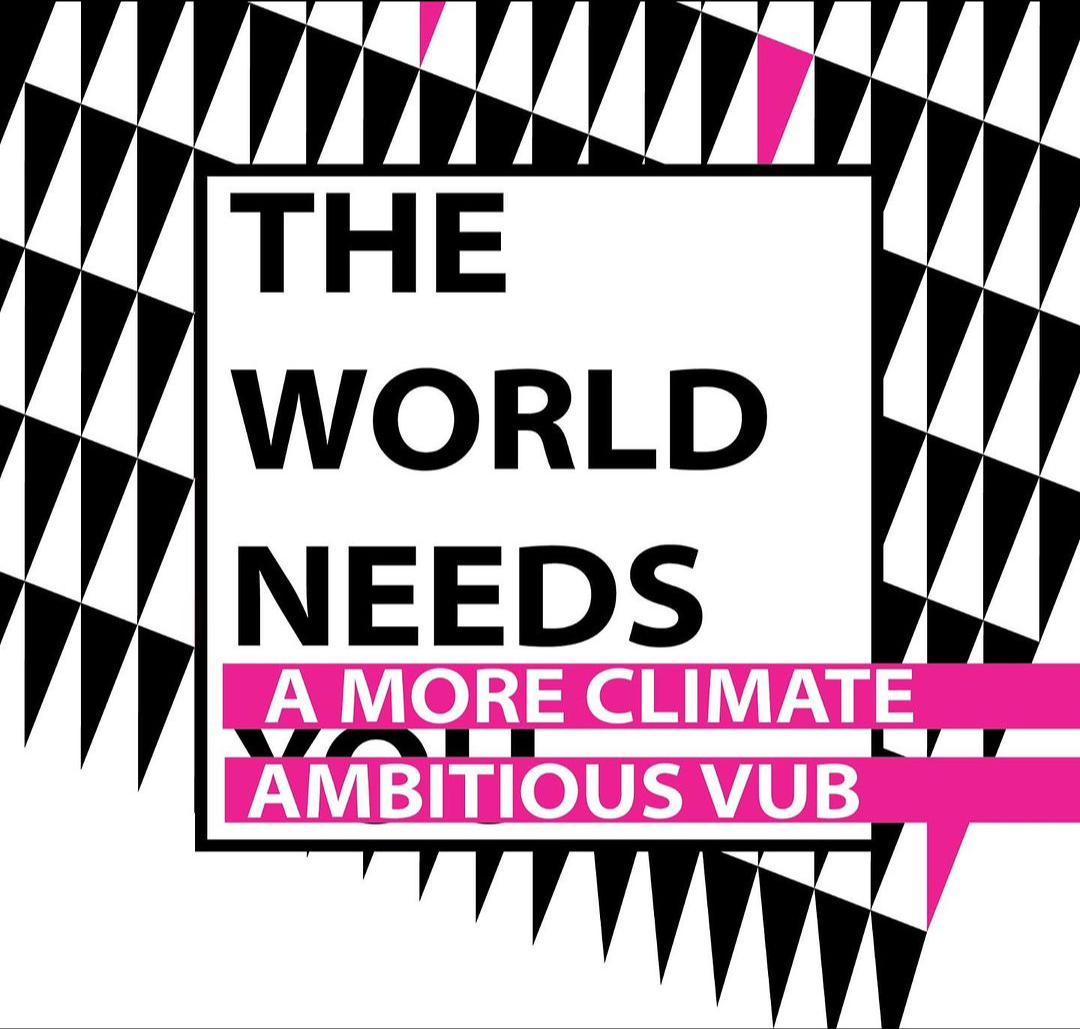
Climate Week; Colonialism and the Environment through the lens of Palestine and the Occupation
Ghassan Bardawil
06.12.2023
Despite the massive success of the 2015 Paris Agreement, the world is still caught in limbo when it comes to establishing an effective collective legislating framework for reducing emissions. Temperature changes and climate shifts are set to intensify dramatically in the coming years and the impacts are expected to displace, starve, and impoverish hundreds of millions of people globally. Despite huge challenges and set-backs, the world remains steadfast in reducing emissions dramatically in the coming decades. Climate week events are taking place across the VUB campus right now in tandem with the COP 28 summit in Dubai, where the international community is discussing and negotiating a variety of environmental and economic strategies targeted towards development and fighting climate change.
Over the last years, I have been following the COP summits among many international climate initiatives closely. I have done plenty of research and writing on the impacts of climate change and policy on the third world through my education, as an international relations and governance student, and so I felt particularly invested. This year is different though, on some level it is difficult for me to watch the huge number of representatives of countries, organizations, and corporations come together with so much unison to discuss these climate goals while the deafening silence on the mass extermination in Gaza rings in my ear. The resumption of the occupation’s shelling and airstrike campaign in Gaza has been horrific; bringing with it the martyrdom of over 700 Palestinians in the first 24 hours.
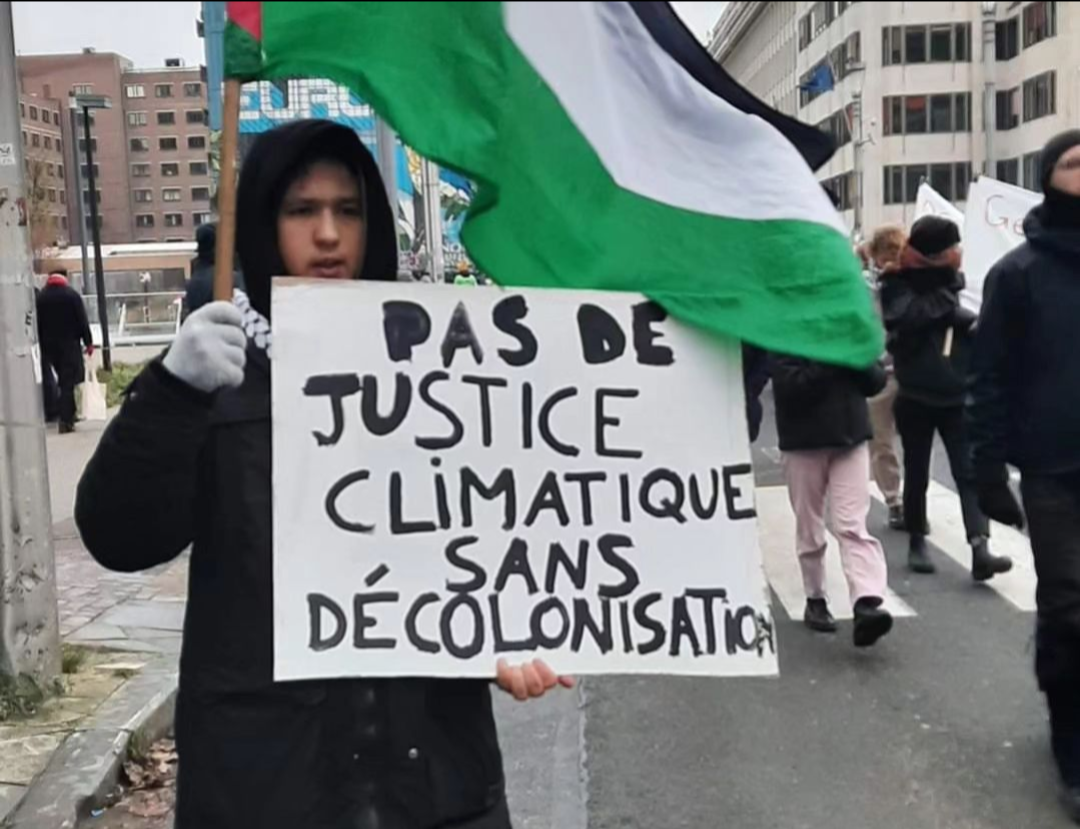
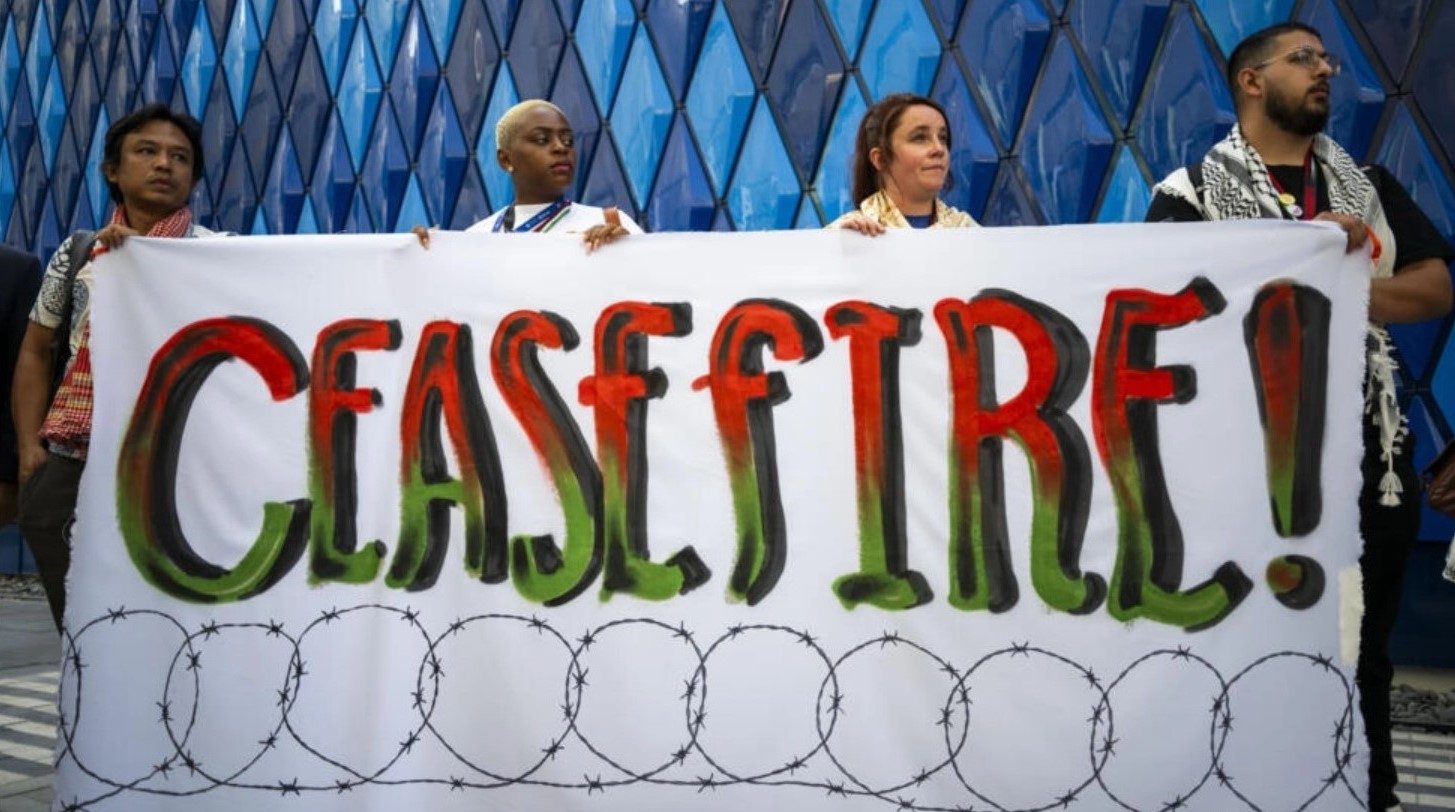
It seems I’m not alone in having these feelings though. Despite the almost dystopian ban on many forms of protest in the UAE, activists held a demonstration at the COP 28 summit in Dubai last Sunday demanding a Gaza ceasefire. The COP “Blue Zone” venue is overseen by a world body and not by Emirati authorities. Because of this, protestors and activists from the Climate Justice Coalition, Debt for Climate group and other organizations carried out a large solidarity gathering opposing Israeli aggression and calling for cessation of violence. The success of the action is especially inspiring considering the organizers’ effort to curb displays of Palestinian symbolism, even restricting participants from wearing their Kiffiye.
The protestors not only succeeded in bringing the ethnic cleansing of Gaza to the world stage, but also the intersectional discussion this demonstration invites is a victory in and of itself. It is vital to remind ourselves of the impact of neo-colonialism on the environment and climate in which we live. Conflict is a major global contributor with the global military carbon footprint estimated to be around 5.5% of all greenhouse gas emissions. Many demands have been made in light of COP 28 to place military emissions on the agenda. But I think these estimations are obscure on such large scales and it’s difficult to comprehend the direct impacts of these conflicts.
The prolonged Israeli occupation of Palestine presents a case study with countless examples of environmental degradation and weaponization of climate policy to enforce and maintain settler-colonialism and apartheid. Israeli policy and aggression strategically damage Palestinian land and environment in ways that both make the territory unlivable and strategically reinforce Israeli land claims. On the other hand, the restrictions imposed by the occupation make it near-impossible for Palestinians to achieve significant progress towards climate goals and energy transition. I think exploring some of these examples from Palestine can expand our perspective on how these mechanisms of exploitation operate, and open up a discussion on how these colonial structures manifest in other parts of the world.
The current assault on Gaza is horrific in its human cost. Those spared by the ceaseless airstrikes and ground operations are left without water, food, or shelter in a flattened wasteland and no hopes of a future. Environmental damages constitute only one of many fronts on which the Israeli aggression intends to devastate Gaza and its population; but it is a critical strategic front for the IDF as has been shown through the previous offensives on Gaza. This strategic approach to environmental destruction is prevalent in colonial history globally and can easily be seen in the aftermath of the United States’ 20 year occupation of Afghanistan; where skin diseases have become prevalent in heavily affected regions and drops in crop yield and quality have worsened the malnutrition and handicapped the economic capacity of the territory to recover in the future. Scorched earth tactics employed by the Israeli occupation in Gaza resemble the US campaigns in Vietnam and Korea, whose environmental impact remains an open wound on those landscapes.
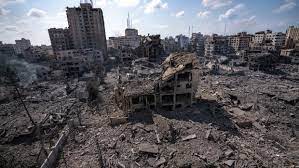
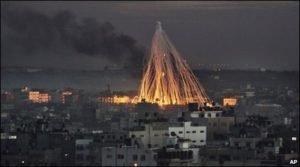
Shelling and airstrikes have flattened more than 60% of the Gaza Strip constituting the textbook definition of ‘indiscriminate’. However, the first days of the offensive saw the strategically targeted destruction of water supply networks incapacitating the distribution of potable water, treatment plants, and waste management. Additionally, the occupation ramped up the historic targeting of farmlands and aquifers with payloads that poison the soil and make future harvests toxic if not impossible. The preliminary destruction of public institutions and infrastructure which serve to ensure a livable environment for Gazans is employed to force population transfer at the threat of mass extermination.
Air quality and water pollution from excessive use of phosphorus based (and other chemical) armaments has reached unprecedented levels with the current aggression on Gaza. International pressure against Russian use of white phosphorus in Ukraine ceaselessly presses the long term environmental and human impacts of these armaments, yet seems silent regarding their use in one of the most densely populated strips of land in the world. Contaminants like heavy metals and toxic chemicals leave horrifying long term human and environmental damage, and their blatant use by the Israeli occupation signifies their willingness to overlook the environment with impunity in order to more conveniently carry out their agenda of ethnic cleansing. The environmental impact of the assault on Gaza will serve to ensure that even when the shelling ends, countless Palestinians will continue to die because of the effects.
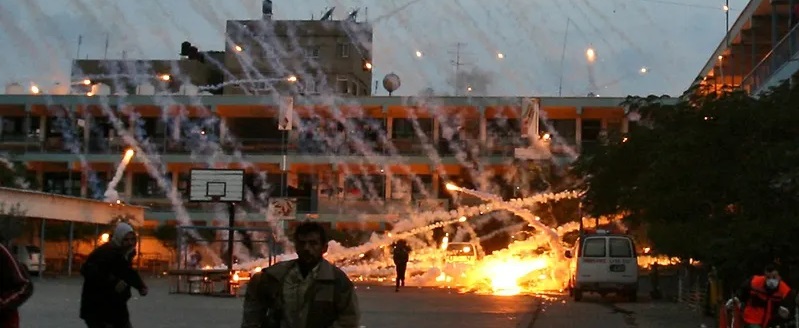
This impunity is characteristic of the occupation, as it has been for many if not all settler colonial projects throughout history. I remember in my youth noticing the difference between the trees in Palestine and those in Jordan, just across the river. Only to discover that the introduction of the European pine (Pinus Halepensis) to Palestine is a result of the Nakba in 1948 and subsequent campaign of ethnic cleansing of Palestinians. The pine grows faster and more densely and spreads quicker than indigenous trees and so was conveniently introduced to overrun and cover up the countless villages and farms whose inhabitants were expelled or slaughtered in the 1948 war. Additionally, invasive species like the pine, and others introduced by the colonial project, damage ecosystems and threaten the historic symbiosis between people and land. For an agrarian, sedentary culture like Palestine has fostered for millenia, this is an effective way to further isolate and alienate Palestinians from our homeland and culture. Scholars like Ilan Pappe and Idith Zertal have repeatedly highlighted how central this isolation and environmental destruction is for a successful ethnic cleansing campaign.
In the West Bank, industrial settlements are built to ensure hazardous waste is not a threat to “Israel proper”, encouraging a more loose interpretation of environmental protection standards. Walls, fences, and bypass roads not only serve to separate people and communities from each other and their land, but also aggressively cut carefully balanced ecosystems apart. The geography of the territory places Palestine in the migratory path of countless birds, some of these paths span the majority of two continents. The threat of military industry and separation infrastructure on these species is an incalculable loss not only for the Levantine ecosystem but globally.

On top of the direct damage to Palestinian flora and fauna and the poisoning of the water, soil, and air, the occupation also serves to handicap Palestine from approaching its own administrative climate related goals. The limitations in Palestinian sovereignty imposed by the occupation in general, and the settlement agenda specifically, serve to disable Palestinian adaptive capacity to environmental damages. Denial of permits and land confiscations and restrictions in the West Bank halt any productive development of clean energy or environmental projects. Gazans are relegated to using much more harmful fuel and diesel generators for their energy requirements due to being denied any access to their large offshore reserves of natural gas (which Israel began selling bonds for at the beginning of the offensive in October), which would produce a significantly smaller carbon footprint and environmental damage. These constrictions appear absurd when viewed alongside Israel’s self-depiction as a global pariah of clean energy research and development.
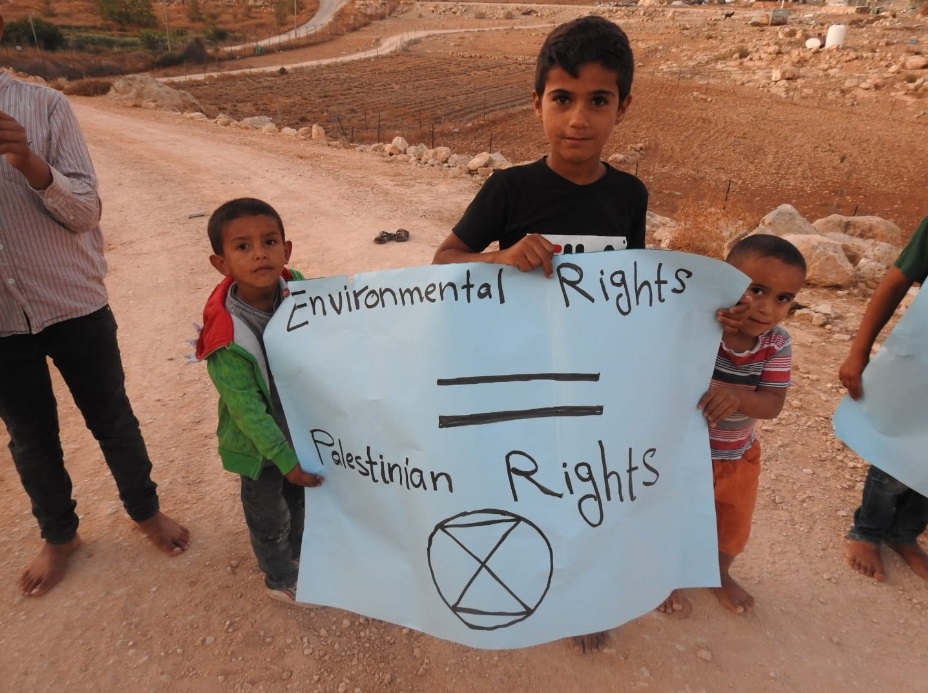
“In its National Determined Contribution, submitted in August 2017, Palestine committed to reduce its GHG emissions by 12.8 percent by 2040, relative to the business-as-usual levels under a scenario where the Israeli occupation continues (status-quo scenario), and by 24.4 percent by 2040 under a scenario where the Israeli occupation ends”
-Hadeel Ikhmas (Climate Change in Palestine, TWiP #276)
It seems impossible to understate the horror of the human costs of the current assault on Gaza and the occupation of Palestine as a whole. The environmental abuses exist on one of many fronts that this colonial project manifests itself. Israel’s dehumanization of Palestinians with impunity and repeated assaults on Palestinian lives and society inherently requires and justifies the destruction and poisoning of the environment, just as we have been shown by repeated historic examples.
Settler-colonial and extractive structures prerequisite the utilization of environmental destruction. The case of the Israeli occupation presents one of countless cases. I’m curious to hear from our members and readers about the weaponization of the environment in their experience of colonialism. Please reach out with your perceptions, experiences, ideas, or questions on the topic via ‘contact us’ on the main page of the blog, or through our social media. Don’t forget to stay updated on Climate Week events and the upcoming WDVUB plans and publications, as well as the VUB Palestine Solidarity Network. And keep an eye on the Blog for more content and discussion on the topics.


